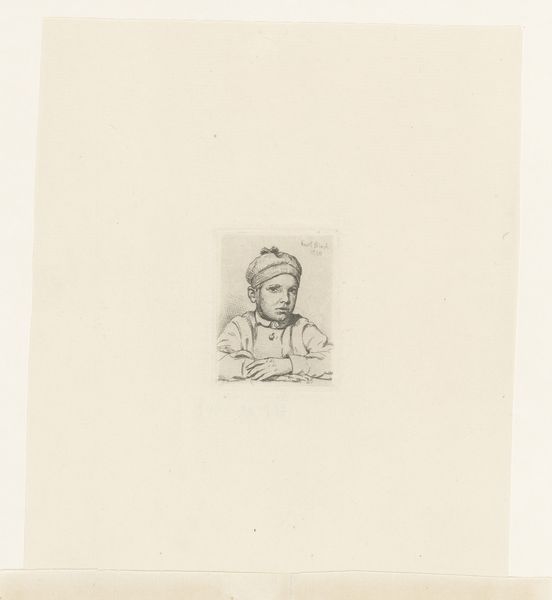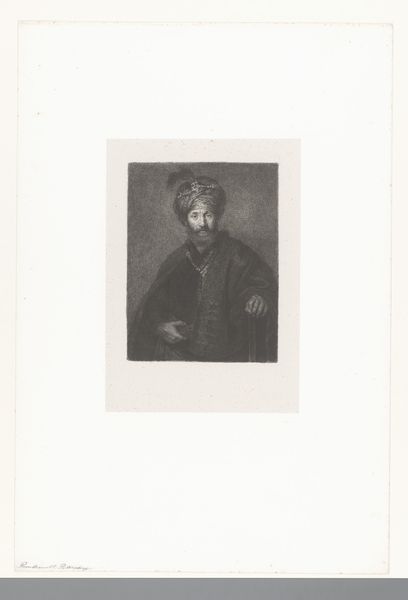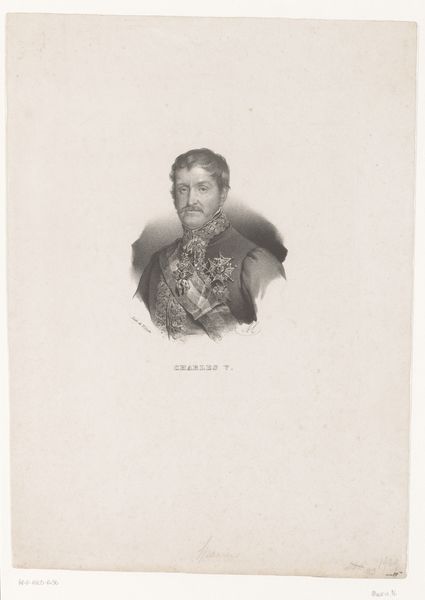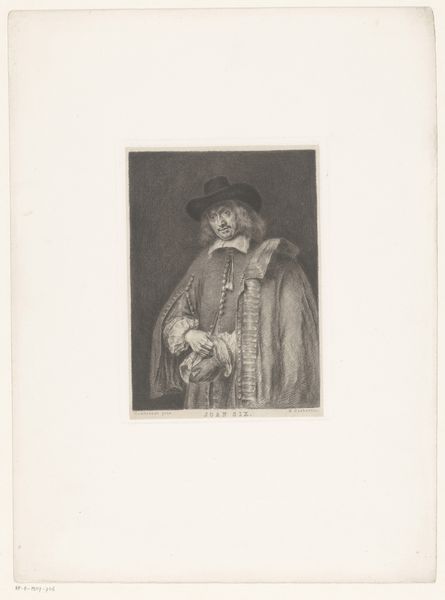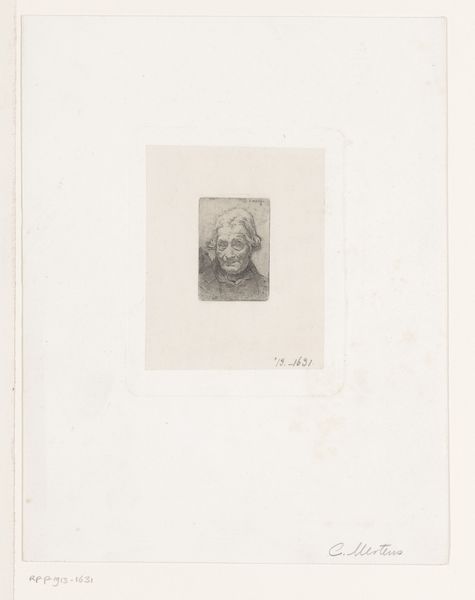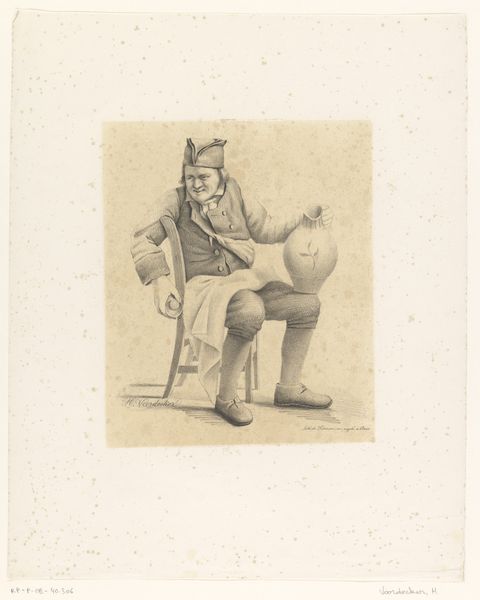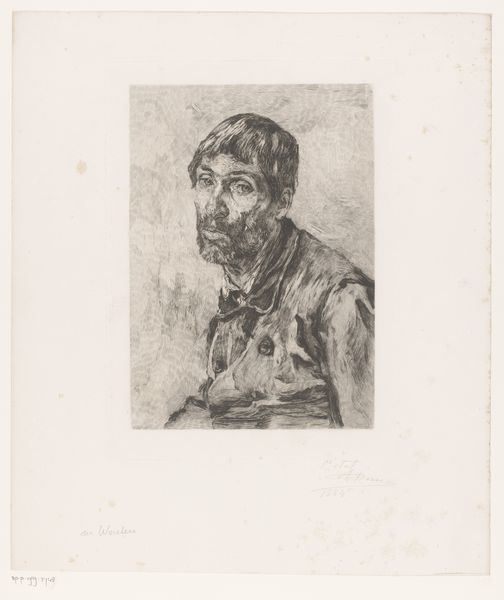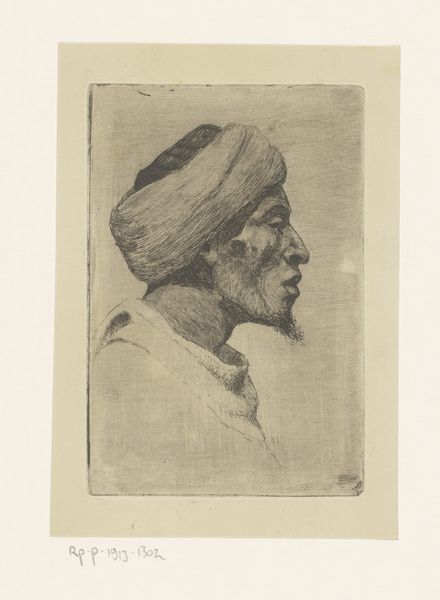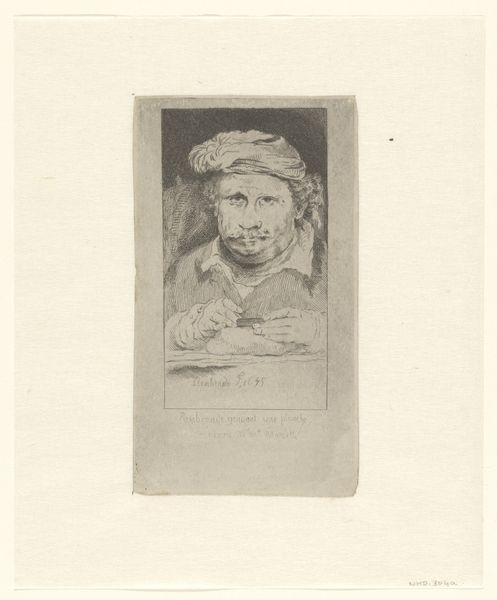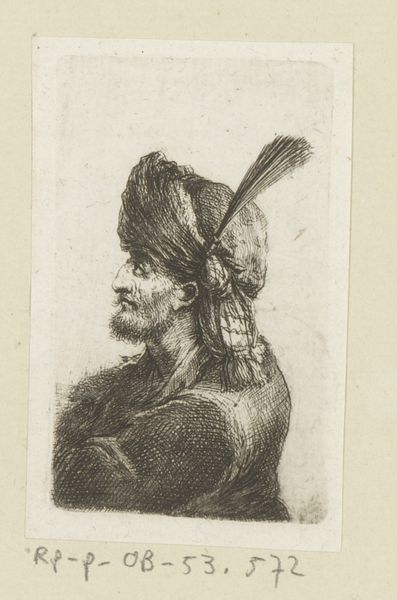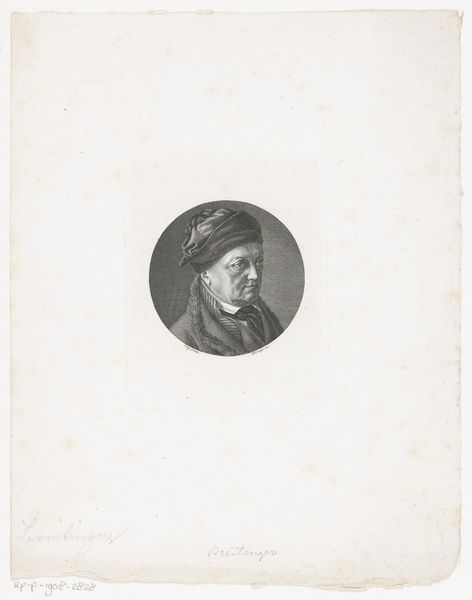
#
pencil drawn
#
photo of handprinted image
#
shape in negative space
#
light pencil work
#
white dominant colour
#
pencil sketch
#
pencil drawing
#
pencil work
#
tonal art
#
remaining negative space
Dimensions: height 169 mm, width 124 mm
Copyright: Rijks Museum: Open Domain
Curator: Let’s consider this intriguing drawing. This is Charles Mertens' "Head of a Man with Helmet and Harness," created around 1882. Editor: It’s captivating! The fine lines give it such a delicate, almost ghostly quality. There’s a real sense of melancholy in the man’s gaze. Curator: The context of its creation is interesting; this comes at a time of intense shifts in European political power, a rising sense of nationalism and military prowess, especially following the Franco-Prussian War. A man in full armour, what might he signify? Editor: Absolutely, what does masculinity, especially militant masculinity, signify in the artwork, but more generally? Thinking of identity, might he be symbolic of a dominant power structure asserting its authority through visual representation? It reminds me of similar, powerful images used for recruitment. Curator: Exactly, but this isn’t propaganda, as such. Instead, it presents a very solitary figure. The detail in the armour contrasts so sharply with the ethereal quality of the face itself. Is he strong, or vulnerable, trapped in the expectations of his role? Editor: Trapped, definitely. The heavy helmet almost smothers him. There's a feeling of vulnerability despite the armor. Considering the late 19th century rise of industrialised warfare, might it subtly critique the romantic ideal of the soldier, suggesting a more complicated, and perhaps disillusioned, reality? Curator: I hadn't considered disillusionment specifically, but that’s insightful. It also begs a wider exploration of militarism and the depiction of men involved in conflict across different national contexts and how this reflects political sentiment. Editor: It seems Mertens' created more than just a portrait; he offers an insight into the complexities of power, representation, and perhaps the individual caught within broader social narratives. Thank you. Curator: Indeed, and a poignant one at that!
Comments
No comments
Be the first to comment and join the conversation on the ultimate creative platform.
